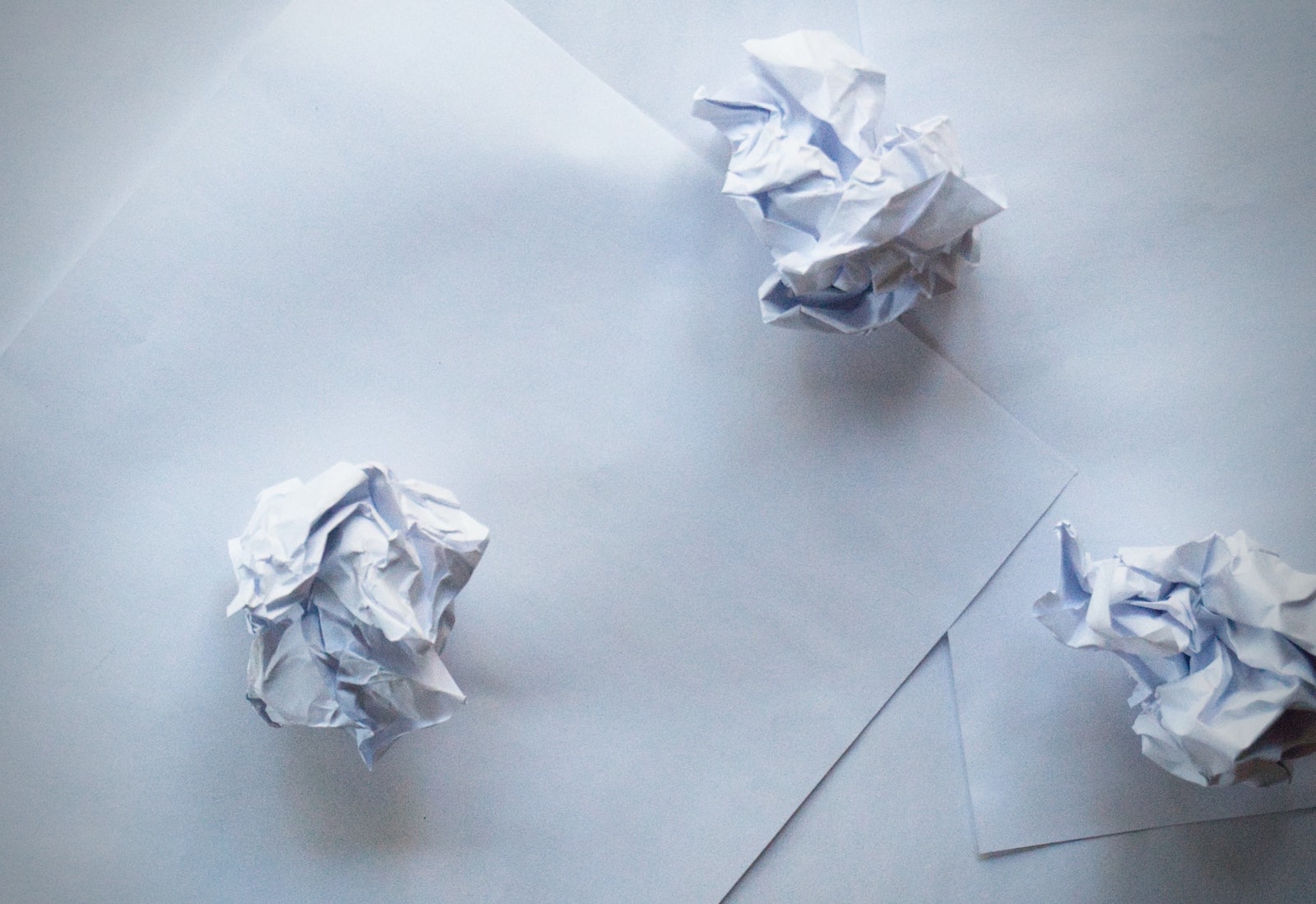50% Of Women In Their 20s Have Hormonal Acne — How To Finally Get Clear Skin
50% of women in their 20s have hormonal acne—you're not alone!
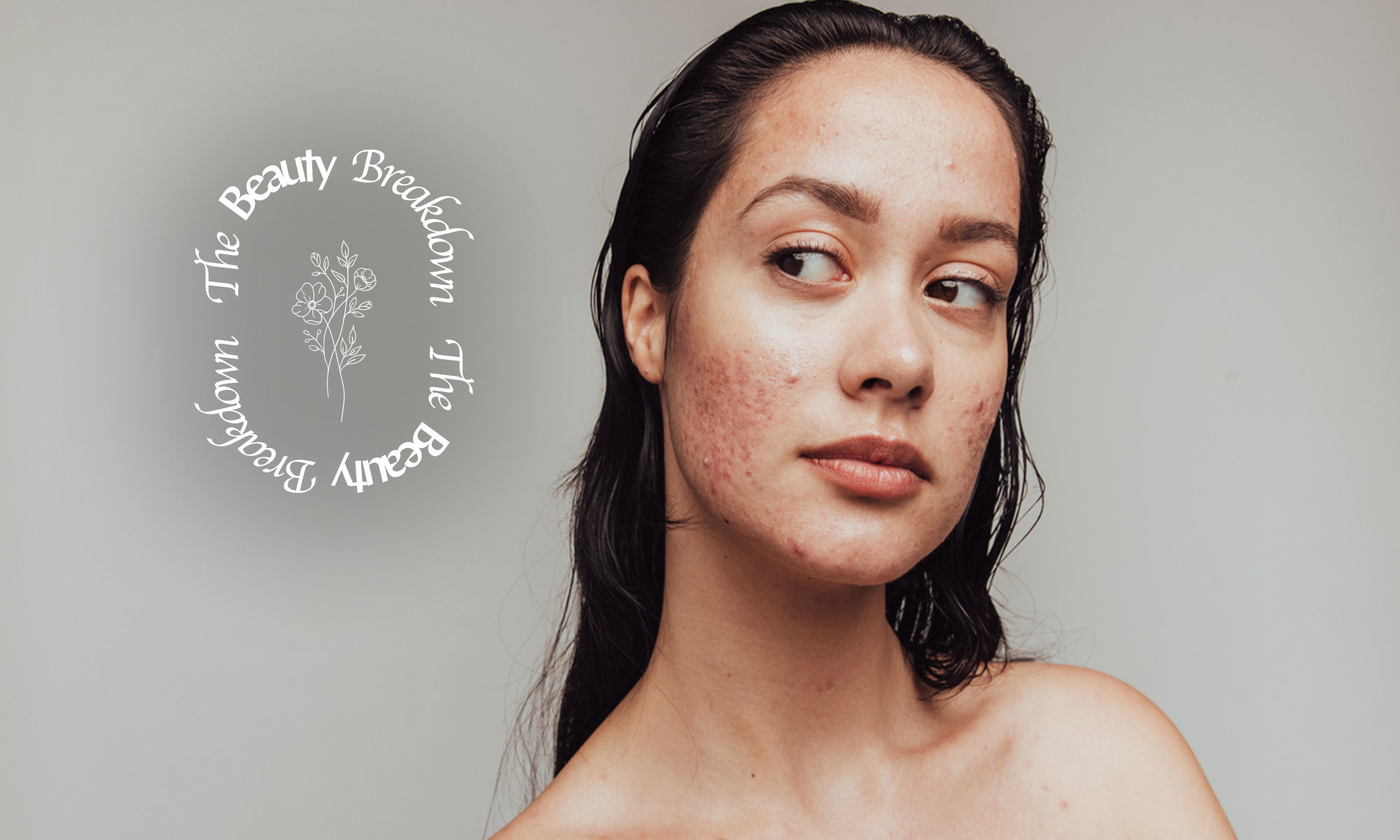

mbg Assistant Beauty Editor
mbg Assistant Beauty Editor
Hannah Frye is the Assistant Beauty Editor at mindbodygreen. She has a B.S. in journalism and a minor in women’s, gender, and queer studies from California Polytechnic State University, San Luis Obispo. Hannah has written across lifestyle sections including health, wellness, sustainability, personal development, and more.
Image by jacoblund / Istock February 20, 2023 Our editors have independently chosen the products listed on this page. If you purchase something mentioned in this article, we may Welcome to the Beauty Breakdown, our series that dives into today's buzziest beauty topics. In each, we focus on a different theme and highlight all the need-to-know basics, common mistakes, and the best products to get your hands on. Do you know anyone who takes spironolactone? If you’re a woman in your mid-20s, chances are you probably do. This medication is used off-label to treat hormonal acne in women, a skin condition 50.9% of women in their 20s and 25% of women in their 40s struggle with—plus, research shows this kind of “adult acne” can persist even after the age of 501. Men can experience hormonal acne as well, but it’s much more common in women, especially in adulthood. But has hormonal acne always been a major part of the female experience? Given the increased stress levels, hustle culture, hormonal birth control, and hormone disrupters found in the world today, it’s safe to say probably not. This kind of acne is particularly frustrating because you simply cannot completely control the root trigger—imbalanced hormones. Not to mention, getting acne in your adult years can make you feel insecure, as if you don’t give off a mature, professional appearance when you need to. However, dermatologists have been treating this form of acne for decades, with more trusted options available now than ever before. If you’ve been going through it with hormonal breakouts, we hear you. We asked dermatologists for help, so you can feel more in control of what’s happening underneath your skin and learn how to ease these pesky breakouts. To come, the 101 on hormonal acne—from root causes to a full skin care routine and how to support hormonal health from within. Image by mbg Creative / mbg creative

The 101 on hormonal acne
Acne is a very complex skin condition. There are several factors that contribute the formation of acne. On a basic level, sticky skin cells and excess sebum production clump together and clog your pores, trapping bacteria underneath and triggering inflammation. This process can be influenced by a plethora of internal and external forces, such as hormones, diet, stress, and the list goes on. But, essentially, sebum production is at the heart of acne.
Not-so-fun fact: Sebum production is controlled by hormones, specifically androgens, board-certified dermatologist and founder of NicholsMD of Greenwhich Kim Nichols, M.D., FAAD tells mbg. Androgens cause the enlargement and overstimulation of the sebaceous glands found in the hair follicles, she explains. Then, this sebum snatches up dead skin cells and clogs the pore, resulting in a breakout.
Estrogens have the opposite effect, meaning they inhibit the secretion of androgens, modulate genes involved in the growth of the sebaceous gland and inhibit their function. The activity of the sebaceous gland, therefore, depends on the estrogen and androgen ratio1—which is why many people consider birth control pills containing estrogen as a possible form of treatment.
You’ll generally find hormonal breakouts on the chin and along the jawline, often going down onto the neck as well. Back and chest acne can also be linked to hormone imbalances. Some breakouts can be pustules and papules (inflamed zits with a white head), while others can be cystic and under the skin.
“Cystic pimples are deeper, larger, and can occur when the bacteria, sebum, and dead skin cells become trapped beneath the surface of the skin and can cause a large and painful bump,” Nichols explains. And yes, you can have a combination of both.

Image by mbg Creative / mbg creative
5 Things we’re getting wrong right now.
Half the battle of treating acne is watching out for additional triggers. Below, five things that might be making your breakouts worse.

Image by mbg Creative / mbg creative
The 6 steps you need to know.
Now that you know what to avoid, let’s dive into how to treat your hormonal acne.
1.
Figure out what type of breakouts you’re dealing with.
Nichols notes the key to treating hormonal acne is first figuring out what kinds of pimples you have. Here’s a quick guide to help you out:
2.
Put together your topical routine.
If you have a combination of any of the following, you’ll want to focus on the most severe type of pimple you have and treat it from there. Before we get into that, you should know that many of these treatments can take anywhere from a few weeks to a few months for the best results to show—so don’t switch it up too early and give each method at least three months to show you what it can do.
Here, the best active ingredients for each form of acne.
3.
In the meantime, tend to your hormones internally.
As mentioned before, you can support healthy hormones from within. This includes lifestyle choices surrounding diet, exercise, sleep, and mental health.
Diet wise, do your best to craft up balanced plates. This means getting your leafy greens, protein, healthy fats, and carbohydrates. Include other foods like those rich in probiotics and fiber as well—here’s more ideas if you want to dive deeper.
A lack of high-quality sleep will increase cortisol levels, which, as you now know, can manifest into more sebum production and more breakouts. Do your best to get a full night's rest as often as you can (helpful tips here if you struggle catching Z’s).
If at all possible, try to manage your stress levels, too. Stress can cause an increase in sebum production—which you don’t need on top of a hormonal uptick. Experiment with meditation, breathwork, yoga, journaling, or any other activity that makes you feel calm.
Lastly, exercise! Exercise produces endorphins2—chemicals in the brain that make you feel good—which help decrease tension, elevate mood, improve sleep, and boost self-esteem. Plus, it may double as a stress management technique.
It can be tempting to deploy all of your acne fighters at once, but here’s the thing—you don’t need to “fight” your acne, you need to heal it. This means selecting those targeted treatments (like retinoids, exfoliants, benzoyl peroxide, etc.) and sandwiching them in a barrier-supporting skin care routine.
Be sure to keep the rest of your products (like serums and moisturizers) solely focused on replenishing hydration—but be sure to scan them for pore-clogging ingredients first. Apart from your cleanser and treatment, look for hydrating serums, nourishing moisturizers, and of course, SPF.
You’ll know you’ve overdone it if your skin becomes red, itchy, and sensitized. This means you have a damaged skin barrier, and you’ll need to lay off the actives for a few days and repair it (here’s how).
5.
Know your prescription options.
Unfortunately, there is a stigma surrounding acne medication, but let us be very clear: If your acne is causing you psychological stress and your dermatologist thinks you’re a great candidate for oral medication, you shouldn’t feel shame for following their suggestion.
As we mentioned before, acne is a very complex skin condition, and it’s equally as personal. While the steps above will help many people struggling with hormonal breakouts, plenty of other folks may need something stronger to fully clear their acne and keep it at bay.
For hormonal, you have four main oral prescription options:
Last but not least, don’t hesitate to see your dermatologist. Many people are under the impression that anything less than cystic acne should just be treated at home, but every kind of breakout can benefit from a derm visit, if you have access to one.
What’s more, prescription-grade retinoids can be cheaper than OTC options, depending on your medical insurance. If you visit the derm, they can help you assess the most affordable options for your financial situation.
Every person has unique skin, even if they experience similar breakouts. A dermatologist can help you figure out which products will work best for your skin type and give you some peace of mind that what you’re doing right now is the best path to take.

Image by mbg Creative / mbg creative
3 extra tips.
If you want to go even further to treat your acne, consider these add-ons.

Image by mbg Creative / mbg creative
6 best products to try.
Here, the six best products to get you started.
Best cleanser: The INKEY List SuperSolutions 5% Benzoyl Peroxide Cleanser
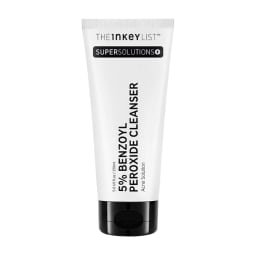
Con
May be drying Not the best for sensitive skinActive ingredients: Benzoyl peroxide
Considerations: VeganCruelty-free
Those with whiteheads and blackheads only will want to stick with a salicylic acid cleanser or a gentle cleanser. However, those with inflammatory breakouts and cystic acne may want to call upon benzoyl peroxide. This ingredient helps to kill acne-causing bacteria on the skin, thus preventing future breakouts and managing active ones. Leave this cleanser on for two minutes before rinsing it off and scatter the use to every other day if your skin feels too dry.
Best exfoliant: Naturium Salicylic Acid Serum 2%
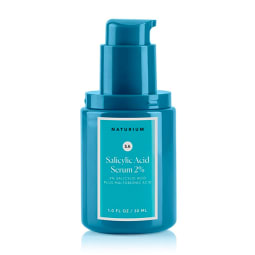
Pro
Simple ingredient listAffordableHelps even skin toneCon
Reviewers note occasional package malfunctionActive ingredients: Salicylic acid
Considerations: VeganCruelty-freeFragrance-free
Plenty of derms will tell you to lookout for salicylic acid as a first-defense acne treatment. This BHA dives deep down into pores and clears out dirt and buildup, helping to treat breakouts and prevent future ones from popping up. This simple SA serum from Naturium has everything you need and nothing you don't for quicker results without the extra dryness and irritation.
Advertisement
This ad is displayed using third party content and we do not control its accessibility features.
Best retinol: Medik8 Crystal Retinal 3
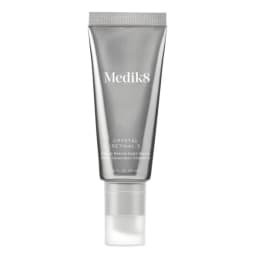
Pro
Stable formula and safe packagingIncreasing strengths up to 0.2% availableContains hyaluronic acid, vitamin E, and glycerin as wellCon
PriceyStronger formulas may be irritating for hypersensitive skin typesActive ingredients: Retinaldehyde
Considerations: VeganCruelty-freeFragrance-free
Legendary esthetician and acne specialist Sofie Pavitt recommended this retinal serum to me a while ago for those with acne-prone skin. Not only does the formula contain hydrating ingredients to cushion the active retinaldehyde, but you can also increase the strength of your formula should you want to level up in the future. Think of it like a one-stop-shop for OTC retinol.
Best mask: Biba Los Angeles The Zinc Mask
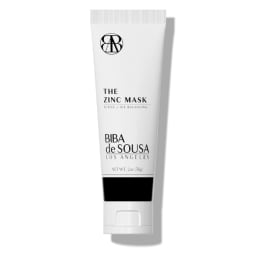
Pro
Skin looks immediately smoother and less inflamed Can be used 2-3 times a weekCon
May be drying for those with already dry skin typesPriceyActive ingredients: ZincSulfur
Considerations: VeganCruelty-freeFragrance-free
Biba De Sousa is a Los Angeles esthetician well-known for her work in the world of acne. She created this mask to be used twice to three times a week by anyone with oily or acne-prone skin. The Bentonite clay along with zinc helps pull out impurities and balance oil on the skin while sulfur encourages a smoother complexion and even skin tone post-use. On a personal note, I swear by this mask as a spot treatment as well.
Advertisement
This ad is displayed using third party content and we do not control its accessibility features.
Best spot treatment: Hero Cosmetics Micropoint for Blemishes
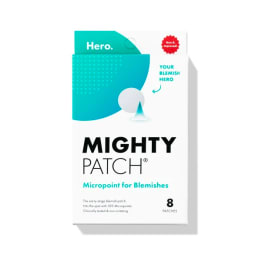
Pro
Micropoints deliver actives deep into breakoutsHelps you resist the urge to pickCon
Won't help prevent future breakoutsActive ingredients: Salicylic acidNiacinamide
Considerations: VeganCruelty-freeFragrance-free
Popping your pimples can be addicting and hard to resist, which is one of the reasons these pimple patches are so great. The micropoints deliver salicylic acid and niacinamide right to the breakout, helping to ease its appearance and encourage quicker healing. Be sure to leave your pimple patch on overnight, or for six to eight hours during the day.
Best for body: Soft Services Clearing Mist
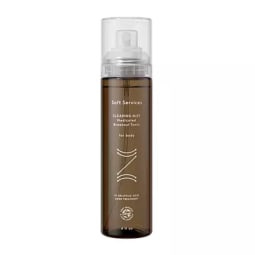
Pro
Easy to apply via sprayLarge bottleContains SA and zincActive ingredients: Salicylic acidZinc
Considerations: VeganCruelty-freeFragrance-free
It's pretty difficult to find a con for this one—it's a great product for back, chest, and body breakouts in general. Inside the easy-to-use spray bottle, you'll find both salicylic acid and zinc—two ingredients known to help ease breakouts anywhere on the body. Plus, the large bottle means you can apply it to larger surface areas without draining your supply in a few days.
Advertisement
This ad is displayed using third party content and we do not control its accessibility features.
Best moisturizer: Skinfix Skin Barrier Restore Gel Cream
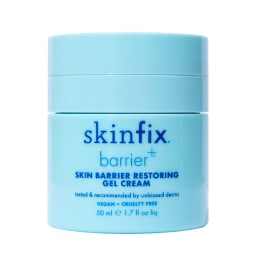
Pro
Enhances skin hydration without clogging poresDeveloped by dermatologistsSafe for all skin typesActive ingredients: ZincNiacinamide
Considerations: VeganCruelty-freeFragrance-free
If you're going to be using strong treatments like benzoyl peroxide, retinoids, and exfoliants, you'll need a good moisturizer on hand. Finding a hydrating cream that won't break you out isn't always easy, as many of them contain ingredients like coconut oil, beeswax, etc.—but not this one. Beyond the rich hydration, you'll also get a dose of niacinamide and zinc, both of which help to regulate oil production and ease breakouts.
Best SPF: Biossance Squalene + Zinc Sheer Mineral Suncreen
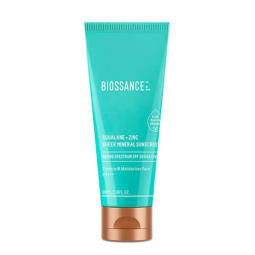
Pro
Won't clog your poresReef safeGreat for all skin typesCon
May leave a white castActive ingredients: Zinc
Considerations: VeganCruelty-freeFragrance-free
Every skin care routine should end with SPF. Especially for those using exfoliants and retinoids, sunscreen is critical because these actives can make you more susceptible to burn and sun damage. Plus, any hyperpigmentation you may have from acne scars will only get darker if you don't wear your sunscreen. This one is free of pore-clogging ingredients, which isn't always easy to find in sunscreen.
Advertisement
This ad is displayed using third party content and we do not control its accessibility features.

Image by mbg Creative / mbg creative
The beauty breakdown.
As you now know, hormonal acne is not simple topic. It’s crucial to remember that everyone’s skin is different and even if two people have hormonal acne, the best treatments and products for them could be completely different—so listen to your skin. Finally, remember that healing your acne takes time, so be patient and kind to yourself during the process. If you are struggling with your mental health during this time, you may consider visiting a therapist for some support—here’s how to find one if you’re not sure where to start.

 JaneWalter
JaneWalter 









